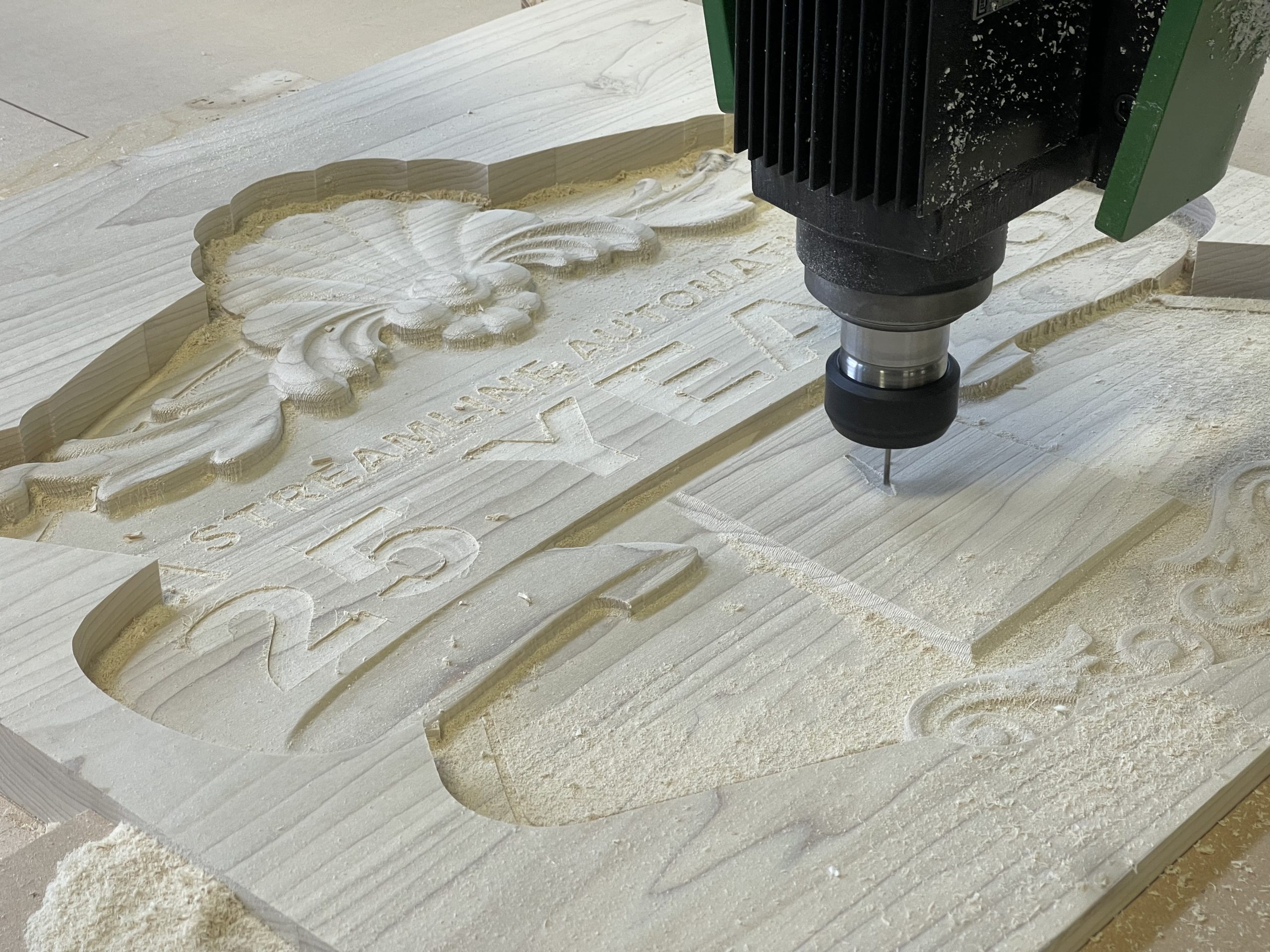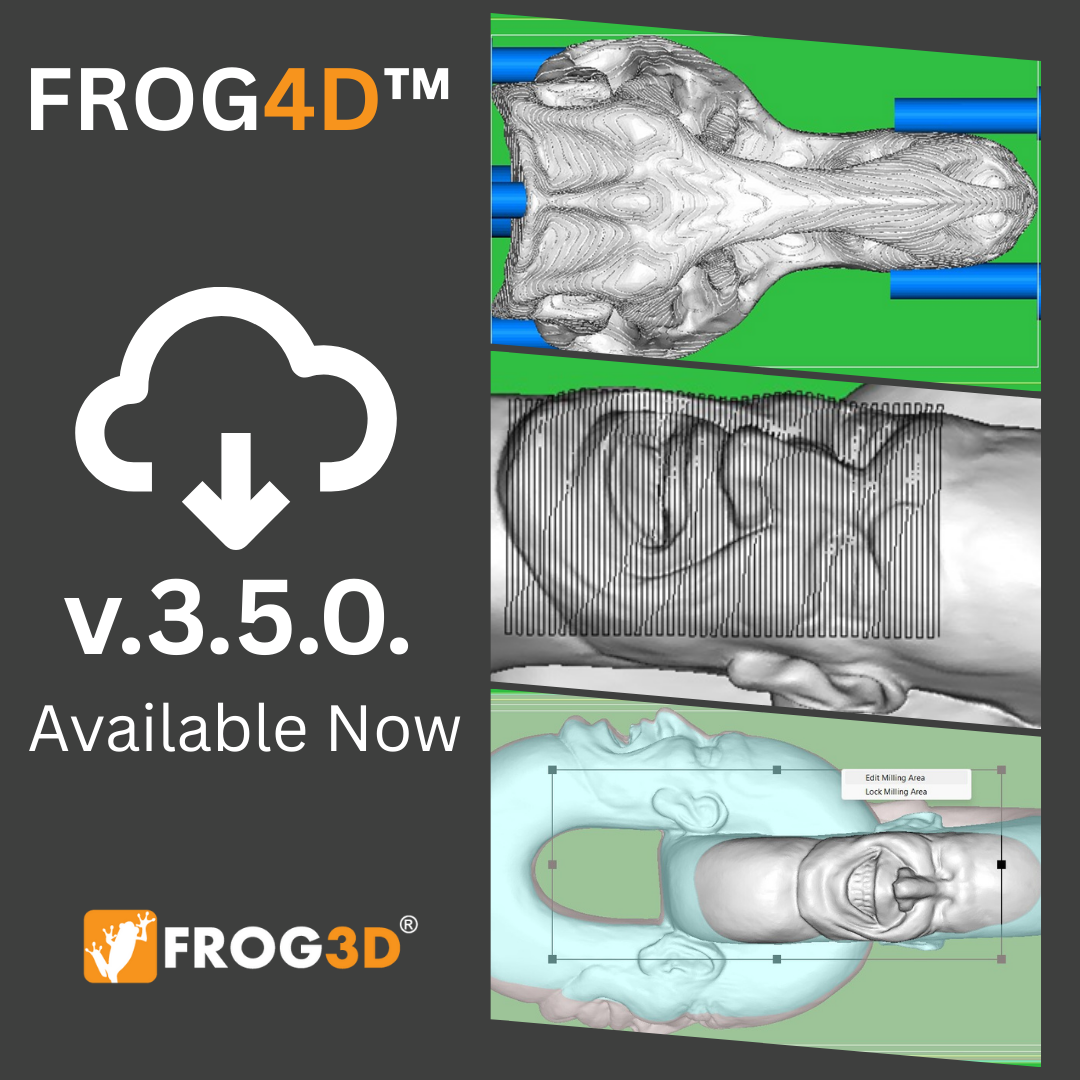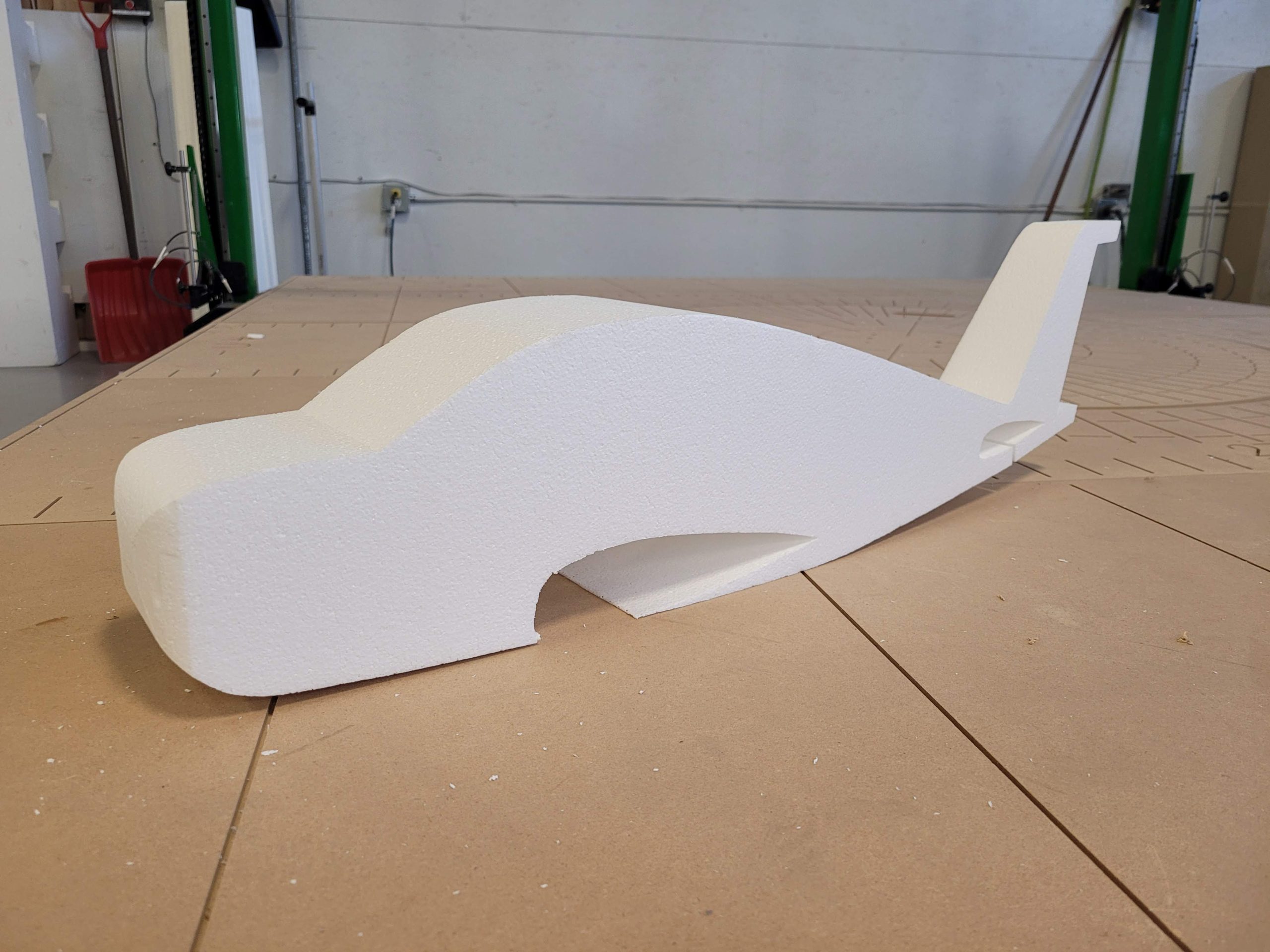Table of Contents
Not all materials are created equal. In this article, we’ll delve into some different materials ideal for CNC carving, their properties, and how to choose the perfect one, or combination, for your project requirements.
Like we highlighted in our last article, “The FROGMill stands out in the industry because it was built specifically to machine foam – it has a large processing envelope, utilizes long tools, and comes with a rotary axis. When used with foam, you can complete large projects in a single piece, instead of slicing and assembling multiple layers of a project.”
But we do not limit our manufacturing processes to using strictly foams. As a matter of fact, our system manufacturing makes use of the same drive systems and construction strategies as cabinet making CNC routers, making the FROGMill a great solution for other requirements outside the scope of foam milling.
Any given project can be approached from many directions. Our end product dictates our intended destination, but we always have different routes to take, and considerations to make, along the way. From adding armatures and mounting hardware, to including joint locations for onsite assembly, sometimes foams won’t suffice for all of our needs.
For instance, a large indoor mall display, at some point, will likely need to fit through a door that is smaller than your display. For this reason, the display will need to be split into smaller sections, and assembled on-site. When we put parts together, we require mounting hardware that is embedded into the parts. But a screw is not going to hold securely into a foam surface, and so we would include wood in specific areas to give us something more substantial to secure a screw or a bolt.
In the signage and advertisement industries, we would utilize foam materials to build out the organic surfaces of any 3D elements, but the text elements of the sign might use acrylic plastics to allow for backlighting.
In furniture making, wood is the most common material to use. Décor walls, ornate reception areas, benches and booths can all utilize woods or other composites to create very attractive end products that hold up to functional use. It is still the most widely used material in any industry, be it for making forms for concrete work, or framing structures for building envelopes.
Having a system that is able to address any of these issues is key – this means you can work off of the same design, use the same software to process each element, and keep your floor space open for the important assembly and finishing work that comes after the machining steps. Let’s delve a little deeper into the materials that we have mentioned, and highlight their major ups and downs.
1. Foams
1.1. Ups
- Cost effective
- Quick to machine – this helps both for rapid prototyping and finished products
- Many densities and types available – From squishy furniture foam to very hard tooling board, foam is suitable for a huge range of requirements
- Great for blocking out large areas
- It floats – Let that sink in! (It won’t)
- Easy to sand and sculpt – EPS Foam is soft, making it an ideal material to carve or sculpt details into. It can be cut easily with a blade, sanded with low-grit paper, and surface-treated with some hot air.
- Can be Lightweight and available in large billets – Making a large-scale object requires a large blank of material. It is difficult, or impossible, to source other materials in blocks the size of EPS blocks. If you could find a block of wood the size of a stock block of foam, you would never be able to move the thing!
- Most foams can be cut with the FROGWire as well, sometimes eliminating the need for milling, depending on your design criteria.
1.2. Downs
- Soft or brittle, and not typically structurally sound – foam will, in most cases, require a protective coating of some sort to hold the shapes and details of your part.
- Not suitable for thin parts or load bearing areas – building a desk, or a table, out of foam might not be the best practice. The table top would not hold much weight, and would likely give out over time.
- Reacts poorly to most chemicals – you need to be careful about things like glues and paints that you use on foam surfaces, as most of the common ones will react with the foam, causing it to melt away. This is a second reason that protective coatings need to be applied to foam surfaces.
- Light weight – In some areas, this is a good thing, but if you sculpt out a foam element, and place it outside, it just might get lost in the wind!
2. Woods
2.1. Ups
- Attractive material – Unlike most other materials, raw wood grain is attractive, and a common finished surface that does not need to be covered up with paint.
- Heavy and durable – making it a great choice for areas of your project that require structure or weight.
- Widely available – It’s never been difficult to source some lumber for a project, and we usually have offcuts lying around the shop on any given day.
- Fairly easy to process – Since wood is such a common building material, we also have easy access to cutting and forming tools for wood, and a huge variety of them.
2.2. Downs
- Costly – especially the rare and ornate woods used for decorative inlays.
- Heavy – the weight of your final product is something that needs to be considered from the beginning of the project. If the entire model is built from wood, it may be too heavy to transport, or you might have to hire structural engineers to ensure that the final installation place is ready to support it.
- Slow to machine – as wood is much harder than foams, it takes much longer to machine, and generally includes multiple passes over the same surface, or heavy sanding after milling, to maintain a good surface finish.
- Typically, only shorter tools available for milling wood on CNC routers, limiting your processing steps and requiring more assembly work after machining.
3. Acrylic and Other Plastics
3.1. Ups
- Flat and perfectly uniform
- Comes in a range of colors, styles, and transparencies
- 3D Printable
- Suitable for thin areas
3.2. Downs
- Can get fairly expensive
- Brittle, not typically used for 3D carving except for very specific purposes
- Thin, and not the best material to glue up in layers
- Can react poorly with machining due to melting or cracking. You must be very careful with your speed and feed settings, and choose the correct tool
4. Composites
4.1. Ups
- Comes is a huge variety for many different applications, plywood, particle board, and MDF are a few common examples of composites.
- As it’s manufactured using a combination of two or more materials with different physical or chemical properties, it can be engineered to address very specific requirements.
- Can be very cost effective
- Thin sheets can be bent around formwork to provide a hard curved surface.
4.2. Downs
- Usually comes in sheet form, not block form
- You must be careful with your choice of composite, and aware of your limitations
- It typically does not carve nicely, and depending on the composite, you might find voids and inconsistencies in the material
- Like wood and plastics, you are limited to shorter tools and shallow cut depths
As we can see, all materials have their places in the fabrication process. A lot of times, a single project is going to consist of multiple materials to get to the end goal. In the advertising and signage industries, you would likely find some of each of the mentioned materials used – The foam is going to be the core of the 3-dimensional elements, with wood embedded into the joint locations to secure our hardware to. The branding is going to be back-lit acrylic plastic, all attached to a composite backboard, which is finally fastened to the wall at its new home.
If you are looking for a system to support your goals in any of these scenarios, the FROG3D system is a great choice for you. It is suitable for all of the mentioned materials, and is built with large sculptural pieces in mind. Don’t limit yourself by going with a dedicated sheet goods router, as it can really constrain the types of projects that you are able to take on. The FROGMill can machine your sheet goods with the same accuracy and definitions as your top-of-the-line cabinet router, with the added freedom of being able to take on large scale projects for any industry.
5. What We Didn’t Talk About:
5.1. Metals
Let’s not exclude the usefulness of metals. For armatures, mounting brackets, and even some final products, metals are the material of choice, for many reasons. That said, the FROGMill is not a suitable system for processing metals. This is mostly due to the fluids that are used when machining, as it generates a substantial amount of heat. You might be able to get away with milling thin sheets of aluminium without coolants or cutting oils, but generally you would use dedicated systems for processing these requirements.
Conclusion
The world of CNC machining offers a diverse array of materials, each with its own set of advantages and challenges. From the cost-effective and versatile foams, perfect for rapid prototyping and large-scale projects, to the timeless appeal of woods, ideal for structural integrity and aesthetic appeal, and the flat, uniform nature of acrylics and plastics, suitable for intricate designs and thin areas – the choice of material depends on the specific needs of your project. Composites, with their engineered properties, also play a crucial role in addressing diverse requirements. The FROG3D system emerges as a versatile solution capable of handling various materials, providing the flexibility needed for projects in industries ranging from signage to furniture making. While metals were not extensively covered in this article, their significance in certain applications cannot be overlooked.
It’s essential to recognize the importance of selecting the right material for the job, considering factors such as cost, weight, machinability, and structural requirements. Ultimately, with the FROG3D system, you gain the freedom to explore different materials and take on a wide range of projects with precision and efficiency, making it a valuable asset for any manufacturing process. Contact us today to find the best equipment for your creations.



